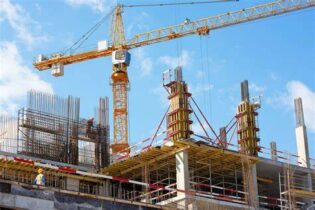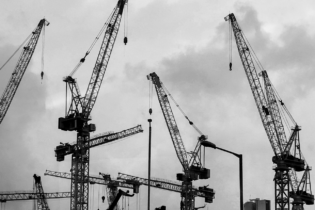Urbanisation and Sustainable Development are key economic drivers leading the global construction industry’s post-pandemic recovery. Despite supply-chain stoppages, rising raw material costs, and the recessionary effect of rising inflation and interest rates, these two (seemingly) diametrically opposed trends are driving innovation and development in the advanced building materials market.
The global advanced building materials market – defined as those construction components that are more sustainable with advanced technical properties compared to conventional building materials – was valued at $56.7 billion in 2022 and is projected to top $111.7 billion by 2031 at an estimated 6,8% cumulative annual growth rate (CAGR).
We took a look at the top trends and technologies driving this dynamic sector:
- Urbanisation
The ever-increasing world population – projected to grow by more than two billion by 2040 – means there is increased demand for housing and supporting infrastructure. The work-from-home phenomena that resulted from Covid-19, and the repurposing of vacant commercial and industrial complexes into new residential spaces present further growth potential.
The construction industry, and specifically cement production contributes between 7-8% of the world’s carbon emissions, highlighting its enormous carbon footprint. This provides significant opportunities for affordable, eco-friendly, and durable building materials.
Designers and architects are using creative building solutions to beautify outdoor spaces and delineate areas. Eva-Last’s sustainable Bamboo Plastic Composite (BPC) provides the ideal low-maintenance building solution that enhances and protects the environment.
Their versatile decking ranges
Pioneer, Apex, Infinity, and
Eva-Tech create striking outdoor applications with superior wear-resistance and long-lasting durability guaranteed for up to 30 years.
Eva-Last’s innovative Lifespan hybrid aluminum composite beams form remarkable architectural features such as screens, pergolas, and soffits in any outdoor area including parks, passages, and shopping centers.
Cladding can also instantly transform and soften a building’s façade, simultaneously improving its energy efficiency by insulating it. Eva-Last’s popular VistaClad composite cladding range features an innovative clip-lock system that lightweight Eva-Last boards simply clip into for a quick and easy installation.
This innovative design allows for improved airflow and ventilation, while its engineered polymer surface protects against degradation from exposure to the elements, reducing the costs of maintenance and replacement.
- Sustainability
Climate change, waste reduction, and decarbonisation are major driving forces compelling authorities and organisations to adopt policies designed to halt or mitigate harmful practices – from extraction, through manufacturing, consumption, and disposal – and implement more sustainable ones.
Various initiatives such as the Inflation Reduction Act aimed at promoting more energy-efficient and sustainable building practices in the United States, and the European Union’s Next Generation supports large investments in sustainable projects for improved energy efficiency and compliance with environmental standards.
One of the United Nations’ Sustainable Development Goals (No.11) is “To make cities and human settlements inclusive, safe, resilient and sustainable”. This necessitates the adoption of green building principles and materials, to protect the planet’s diminishing natural resources including forests, and reduce dependence on fossil fuels such as coal and oil-derived petroleum.
Manufacturers constantly look for alternative raw materials such as recycled plastics and develop new advanced materials such as biofibres (bamboo, hemp, sisal, jute) or engineered components for improved resource efficiency, durability and sustainability. Many of these new cyber-technologies blur the lines between biological and technological characteristics and are designed to outperform traditional building materials.
Eva-Last’s portfolio of bamboo plastic composite building products merges the latest building materials technology with a sustainability mindset.
Using solar power in the manufacturing process provides clean, renewable energy and saves 2 000 tons of CO2 emissions every day. Eva-Last’s eco-friendly composites combine easily replenishable bamboo with recycled plastic, effectively eliminating their reliance on limited timber resources whilst enjoying the proven performance properties of bamboo fibre.
Eva-Last recycles over 31,043 tons of plastic waste annually in its production of market-leading structural biocomposites for the construction industry.
- Digitisation
Covid-19 accelerated the adoption of technology in both the home and work environments. Social distancing measures drove producers to increase automation and improve resource efficiency, while consumers and businesses connected online for everything from shopping to meeting, as well as socialising and project tracking.
From sophisticated software for 4- or 5-D simulations, project management and procurement programmes, to the connected construction site monitoring all equipment, materials and people, and to smart cities networking in the cloud, digitisation is disrupting the construction industry and its practices at an exponential rate.
The EU’s impending introduction of a Digital Products Passport Programme will certainly escalate the growth in green building materials. Designed to make sustainable products the norm in sectors with a high potential for circularity, the programme will track building materials to ensure their proper recycling and treatment from cradle to grave.
By specifying an Eva-Last composite product for your next green building project, you’re assured of an eco-friendly, sustainable, and long-lasting material guaranteed to perform and protect in any environment.








